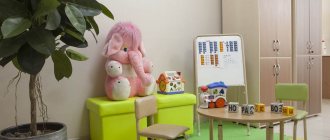What can our “Syllables on the Road” do?
— Allows the child to form visual and auditory associations based on symbols for the gradual production of sounds and learning correct pronunciation.
— Create conditions for staging and automating sounds that are difficult for a child in the form of play-based learning situations that are modeled during syllabic reading (together or following an adult).
- Allows the introduction of plot-based physical education minutes and dynamic pauses into classes on correcting sound pronunciation and nurturing the sound culture of speech, teaching literacy.
— In an unobtrusive form, they create motivation in the child to learn letters, support the first attempts at reading and writing (form interest in tracing the contours of letters).
— In the form of competitive game situations, children develop their skills in reading syllables with consonant clusters.
— Develop an orientation towards the system of road signs, include them in the experience of motor improvisation of a group of children, and form an attitude towards use in real life. Preparing for the game From 2 to 5-7 children (from 3 to 10 years old) can play together with an adult. This could be a speech therapist, an additional education teacher, a teacher, or a parent.
Didactic manual “Sound tracks”
"Magic Sound Tracks"
Play aids made of felt for automating sounds for preschoolers with speech and language development disorders.
Teacher speech therapist:
Borodulina Tatyana Sergeevna
g.o. Shchelkovo, 2021
"Magic Soundtracks"
Play aids made of felt for automating sounds for preschoolers with speech and language development disorders.
Formation of correct sound pronunciation is one of the most important stages of speech therapy work with preschoolers with severe speech disorders.
The work of consolidating a given sound in speech is one of the most monotonous and lengthy, requiring the child to repeat the material multiple times. Therefore, children often complete tasks without interest.
In addition, modern preschoolers are spoiled by an abundance of toys and gadgets. And it is quite difficult to interest them in class.
Solving problems of activating cognitive activity and increasing the motivation of children, using the principle of a personal approach, the speech therapist is in a constant search for unusual ideas, translating them into new technologies and techniques.
One such technique is to use felt soundtracks at the initial stage of sound automation.
The purpose of using these aids is to induce impaired speech sounds and automate them.
In addition, they promote the development of fine
motor skills , which is especially important for children with severe speech pathologies.
The manuals are very bright and instantly attract the attention of preschool children.
Magical soundtrack "Cold Breeze".
Goal: automation of sound [C]isolated and in syllables.
Felt guide is intended for preschool children
Application: individual form of work.
Game option:
The child takes a breath and continuously pronounces the sound [C], while simultaneously moving the snowflake along the ribbon. After the child has the correct sound, it is best to immediately consolidate it in syllables. Speech therapist: Let's sing songs for a snowman: SA, SO, SU, SY, AS, OS, US, IS - at the same time, while pronouncing the syllables, the child moves the snowflake without stopping, making sure the correct pronunciation.
Magical soundtrack "The Wasp's Song".
Goal: automation of the sound [З] in isolation and in syllables.
Felt guide is intended for preschool children
Application: individual form of work.
Game option:
The child takes a breath and continuously pronounces the sound [Z], while simultaneously moving the snowflake along the ribbon. After the child has the correct sound, it is best to immediately consolidate it in syllables.
Speech therapist: Let’s sing songs for the snowman: ZA, ZO, ZU, ZY, - at the same time, while pronouncing the syllables, the child moves the snowflake without stopping, making sure the correct pronunciation.
Magical soundtrack "visiting by car."
Goal: automation of the sound [P] in isolation and in syllables.
Felt guide is intended for preschool children
Application: individual form of work.
Game option:
The child takes a breath and continuously pronounces the sound [P], while simultaneously moving the snowflake along the ribbon. After the child has the correct sound, it is best to immediately consolidate it in syllables.
Speech therapist: Let's sing songs for the snowman: AR, OR, UR, IR RA, RO, RU, RY - at the same time, while pronouncing the syllables, the child moves the snowflake without stopping, making sure the correct pronunciation.
Annex 1
I present
to your attention sound tracks
made from felt:
At your disposal
— 2 playing fields (the first - with voiced consonants and vowels and the second - with voiceless consonants and vowels that make up syllables: each field consists of 7 horizontal “roads” and 10 vertical “paths”),
— 10 cards with images of road signs (mandatory, warning, etc.),
— 16 cards with images-symbols of “semi-finished products” for producing difficult sounds (whistling (S, S', Z, Z', Ts), hissing (Sh, Zh, Ch, Shch) and sonorous sounds (R, R', L, L)) ,
— 2 sets of contour letters of the Russian alphabet. Children and adults select cars and toys for moving around the playing field, a cube for determining the number of steps - “movement” along it, an hourglass or a stopwatch (timer) for calculating the “speed of movement”.
www.Logopedy.ru
Dobrynina E. G.,
teacher-speech therapist of the highest category,
Municipal educational institution "Yaya secondary school No. 3", town of Yaya, Kemerovo region. Original article in MS Word format (7.67 MB)
Certificate of Publication:
In recent years, there has been a sharp increase in the number of children with various speech disorders entering the primary grades of secondary schools. Writing (dysgraphia and dysorthography) and reading (dyslexia) disorders are especially common. Reading disorders in children have been studied for a long time, but to this day it is one of the most pressing problems in speech therapy. It is no secret that reading disorders have a negative impact on the entire learning process, on the mental and speech development of the child. Correction of these types of disorders requires targeted and painstaking work by teachers, speech therapists, and parents. To make this process interesting, educational and not boring for students, it is necessary to diversify the work with various games and exercises that would break the stereotypical idea of reading as a boring activity. Exercises and tasks of varying degrees of complexity and variety will help turn the complex process of reading into an interesting game.
GAMES WITH LETTERS
If a child has trouble remembering letters, there are many different techniques to help remember the visual image of the letters.
For example, letters can be sculpted from plasticine, laid out from sticks, matches, mosaics, colorful ropes, cut out of colored paper, burned on boards.
To form a stable graphic image of a letter (grapheme), you can ask the child to trace the convex contour of the letters with his finger, tactile recognition of “sandpaper” letters.
You can use the “Dermolexia” , when the teacher draws a letter on the child’s palm, and the child recognizes it with his eyes closed, and you need to draw on the “leading” hand, to stimulate the leading hemisphere.
The following technique has worked well. Take a piece of paper from an old children's book (or children's magazine) and offer to cross out on it the letter with which you are introducing him at the moment, or the letter that he confuses or cannot remember. For example: “Cross out (circle) all the D’s on this page.”
At the stage of learning letters, it is useful to give the task “Grouping stylized letters” . The child is asked to group identical letters.
Useful tasks that complicate the recognition of letters are: “Crossed out letters”, “Different font”, “Inverted letters”, “How many identical letters”, “Which letters are more”, “Overlayed letters”, “Mirror letters”, “Find a letter among rows of letters”, “Find the desired letter among the crossed out letters”.
You can involve the child himself in the “creative creation” of letters - invite him to “Add the letter” along the dotted lines, “Remake the letter” by rearranging (rearranging) the elements (“What needs to be done to make I from the letter L; from Sh – C and t d.)
Do you like the article? Tell your friends!
To develop memory and attention - “Which letter is missing” - a series of letters are laid out in front of the child, starting with 3 - 4, the teacher suggests remembering in what sequence they are located. The child closes his eyes, and the teacher removes one letter. Options - swap letters - the child reproduces the original version or the adult adds another letter, the student names it. You can play with a gradual increase in the number of letters. You can lay out small words, then rearrange them, “lose” letters from the word, restoring it with the help of the child. Phonemic analysis is also trained here (letters in a word appear in a certain sequence).
“Magic bag” - the child identifies plastic (metal) letters by touch.
The child draws a letter in the air with a pointer, and the adult guesses it (and vice versa). You can “draw” letters on the back, guess from verbal instructions - “This letter is oval-shaped,” “This letter consists of two lines crossed at an angle,” etc.
WORKING WITH SYLLABLES.
- “Syllabic paths” - can be variously and originally designed, in a playful form (“Mountains”, “Parachutist”, “Bug”, “Ball deflates”, “Bonfire”, “Star”, etc.)
- Syllables with “windows”, with moving stripes , etc.
- “Find out the letters and make a syllable”
- “Flowers” (reading syllables on petals)
- “The words crumbled into syllables”
- “Combine syllables into words”
- "Kick the ball into the goal"
- To develop the lateral visual fields of the game - “Pyramid” - looking at the number in the middle, read a word from syllables “moving away” from the center, “Dot in the center” - without taking your eyes off the dot, find a specific letter according to the teacher’s instructions. At the initial stage of mastering reading, some children find it difficult not only to combine syllables, but also to divide words into syllables. This creates certain difficulties in reading. To overcome this obstacle you can use:
- Color coding of syllables . For example: Winter has come. Valya and Sasha are making a snowman. (On the card, highlighted syllables are indicated in a different color, for example blue)
- Exercises on dividing text words into syllables . The child is asked to divide all words into syllables using vertical lines.
- Reading syllabic tables (according to Kalinina, Hegelia) - requirements: the font is large and clear, at first the vowels can be highlighted in red. The tables have hint icons - an arc - a consonant followed by a vowel. A dot is either a vowel without a preceding consonant, or a consonant, or a consonant with a soft sign. The tables follow the principle “from simple to complex”; they can even be called “language-breaking”, but if the child masters them, then in the future he will be able to read the longest and most complex words. Recommendations: you should not move on to the next table unless you have mastered reading the previous one. When reading tables, you need to clearly explain to the child that an arc is a continuous reading of two letters (draw a pointer along the arc), and a dot is the addition of a separate letter and stopping the movement. You can read line by line and column by column.
- “Which syllable is extra” - in front of the child there are cards with syllables, for example: KA, TA, NU, PA. The child explains that the extra syllable is NU, because all the others have the vowel A.
- “Which syllable is missing” (carried out by analogy with letters)
- “Prompt the end of the word” - there are 3-4 cards with syllables on the table in front of the student. For example: TA, NA, RA, SA. An adult pronounces a word without finishing the last syllable. The child must find and read the end of the syllable (voro-TA, boro-NA, quarti-RA, polo-SA). (Verbal material in Kalinina’s brochure, p. 10)
- The child is successively shown cards with syllables, one by one, from which he must mentally compose a word. In this case, each subsequent card covers the previous one. You should start with two-syllable words, gradually lengthening them. A similar game is “Chain of Words” , when the last syllable of the previous word is the first syllable of the subsequent one.
- Reading words with the same syllable structure (picture books).
- Synthesis of words from syllables with one constant and one changing syllable:
RO - (SA, ZHA, MA, TA, LI, FOR, GA) WHO - (SPIRIT, RAST, CHIC)(BAL, BUL, BAN, BEL, PIL) – KA KA- (BAN, LACH, MEN, MIN, RAS)
- Game “Help Dunno” : “Dunno mixed up the syllables. Help him make up a word!”: KA-MU (flour), LO-MO-KO (milk), etc.
WORK AT THE LEVEL OF WORDS AND SENTENCES.
AUTOMATION OF SYLLABILITY,
IMPROVING READING TECHNIQUES.
1. Reading words that differ by one or two letters.
Columns of such words are easily read by children, and each time the word changes with only one letter. After reading the column, you need to ask the child which of the read combinations is not a word, does not make sense, how the words differ from each other. You can lay out several words from the letters of the split alphabet. The learning effect will be better if the teacher draws (prints) each column in block letters on a separate sheet of paper in large font. (see Attachment)
2. Reading columns of words with the same vowels.
Before reading each column, give the child the following task: a) remember as many words as possible; b) remember the vowels in the words.
After reading, you can lay out these words from the letters of the split alphabet (from memory). (see APPENDIX 2)
It must be remembered that without the ability to predict during the reading process, it is impossible to achieve a sufficiently fast pace of reading. First of all, children should be trained to recognize the sound-letter image of a word , focusing only on its individual elements . The following types of exercises serve this purpose.
In addition, such exercises provide high mental activity in the process of learning to read, vocabulary is expanded and refined, word formation and inflection skills are instilled, spelling vigilance is cultivated, and the mobility of the articulatory apparatus is practiced.
Words in all exercises should be pronounced according to spelling (according to spelling standards), clearly pronouncing each sound, but not syllable by syllable, but together. After reading the column, the words are compared, the sound-letter composition, similarities and differences, and the meaning of the words are determined.
3. Reading columns of words with the same ending. (See APPENDIX 3) 4. Reading forms of the same word. (See APPENDIX 4) 5. Reading words with the same root.
Each word from all groups of cognate words is written on separate strips of paper. Each group of words is in a separate envelope, and the reference word of the group is written with a colored felt-tip pen. (Manual “Families of related words”)
The sequence of completing the task is as follows. An adult lays out 2–3 groups of cognate words on the table. The child reads them, then all the words are mixed, leaving only the supporting ones. In conclusion, the child reconstructs groups of words and finds “relatives”.
You can invite the child to arrange the words of each group into a column in increasing order of the number of letters in these words. As you know, reading columns of words, selected by building letters in them, is a very good exercise.
When performing such an exercise, you should not require the child to understand the nuances of the meaning of each word. The main thing is to draw children’s attention to the sound and semantic commonality of words with the same root, to the fact that the vowels at the roots of these words are written in the same way.
6. Making words from their parts.
The work of composing words from its parts - prefixes, suffixes, roots, endings (if the child does not yet know these terms, should not use them) can be exciting and interesting.
Before starting work, the teacher, in front of the child, cuts a certain number of words into parts, for example, polo - onk - a, uncle - enk - a, fox - onk - a, night - enk - a (the number of words depends on the child’s abilities).
Then the different parts of all the words are mixed and the student reconstructs the words.
Additional tasks:
a) Read the words as quickly as possible
b) Remember 3–4 words. Make up the letters of the cut alphabet.
c) “Find the lost particles.” The teacher composes words incorrectly - the student corrects the mistakes.
d) Make up a sentence with 3 – 4 words.
The material may be as follows:
Words with suffixes
— ONK
little stripe, little fox, little hair, birch, little head, little eyes, little lip.
—USHK
grass, village. swan, talker, Cinderella, soldier, darling, beard, talker, crane, feeder, side, beater, rivulet.
(words with suffixes - enk, - isch, - in, - k, - ek. - eni, - ok, - ik, - ist, - nik, - onok, - yonok)
Words with prefixes
Intercept, snatch, grab, snatch, seize, seize, seize, embrace, seize, grab.
Sew, sew, alter, sew, sew, sew, sew, sew, embroider...
Pri-ho-rock, transfer-nos-a, pro-cold-n-y, frost-to-i, e-crash-en-e, etc.
7. Working with rhyming texts.
Improving reading techniques is facilitated by working with rhyming texts. (see APPENDIX 5)
8. Reading “encrypted” words using visual aids.
Here the teacher can show imagination and invention in order to diversify reading and find as many entertaining moments as possible in this process.
The tasks can be very diverse: “Place the syllables in order,”
“Read the words”, “Collect the words”, “Collect in a basket, jar, vase”;
We learn to see words among other letters - “Teremok”, we learn to see on the line and read words denoting a) names of colors; b) names of trees - “Wreath”, “Make compote” (put words together from syllables), “Shoe” (find the names of shoes among the letters), “Fruits” (find the names of fruits among the letters), “Primroses” (find the names of flowers) – and all these tasks can be taken in other lessons, such as natural history, familiarization with the outside world, etc. - here's inter-class communication for you.
Reading words with complication - “Flower” (reading through one petal), “Sun” (reading through one ray), “Reading words crossed out, unfinished, slightly closed”, “Words in which the letters run apart”, “Reading in the direction of the arrows” ”, “Read the riddle (sentence) according to the diagram”, “Reading in ascending order of numbers”, “Reading with a through letter”, etc.
In addition to reading techniques, during these tasks the visual analyzer improves and develops, which affects visual perception and attention. By performing these exercises, errors in optical dysgraphia and dyslexia are prevented, dexterity, intelligence, and technical skills are developed in “reading with complexity.”
Used Books:
1. Kornev A. N. “Reading and writing disorders in children” St. Petersburg, Publishing House “MiM”, 1997.
2. Lalaeva R. I. “Reading disorders and ways of their correction in primary schoolchildren” St. Petersburg, Lenizdat, Publishing House “Soyuz”, 2002.
3. Kalinina I.L. “Teaching Children to Read and Write” /book for parents, primary school teachers and speech therapists/ Flint Publishing House, 1997.
4. Speech therapy /under. Edited by Volkova L.S. / Moscow, “Enlightenment”, 1989.
5. Gavrina, Kutyavkina “Learning to read” /workbook/
6. Wenger, Dyachenko “Guess what our name is” Moscow, “Enlightenment”, 1994
APPENDIX in the original article in MS Word format (7.67 MB)
Interesting articles on the topic:
Approbation of Glinka G.A.’s private methodology. "The problem of early learning to read"
Correct pronunciation is the key to correct reading and writing
Children's reading circle
Stuttering in adults. Features of reading aloud
| < Previous | Next > |
Social commentary Cackle
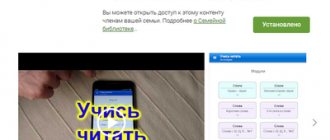
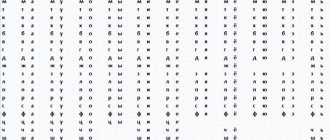
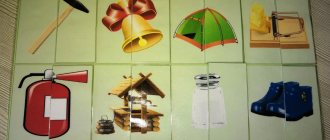

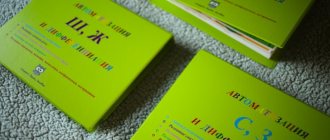
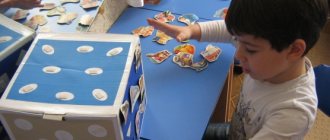
![Visual and didactic manual on sound automation [C] “Interesting cards”](https://pleshakof.ru/wp-content/uploads/naglyadno-didakticheskoe-posobie-po-avtomatizacii-zvuka-s-interesnye-kartochki-330x140.jpg)
